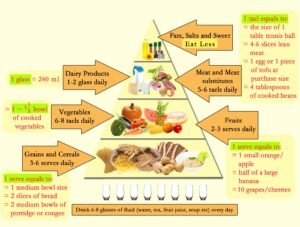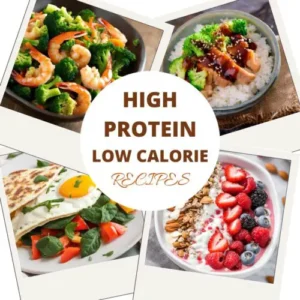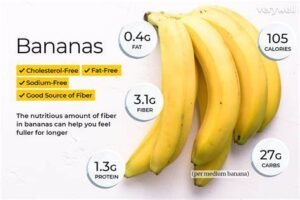WIC Nutrition: 5 Secrets for a Healthier Family
Hey there! Are you a WIC participant looking to make the most of your benefits? We’re here to help you discover some nutritional secrets that can transform your family’s health and well-being.
What is WIC?
WIC stands for Women, Infants, and Children. It’s a federal nutrition program that provides food, health education, and referrals to healthcare services for low-income pregnant women, new mothers, and children up to age 5.
Why is nutrition important for WIC participants?
Good nutrition is essential for everyone, but it’s especially important for WIC participants. It can help:
- Improve pregnancy outcomes
- Support healthy growth and development in children
- Prevent chronic diseases
- Boost overall well-being
In this article, we’ll share 5 practical tips to help you maximize your WIC benefits and nourish your family. Let’s get started!

Secret 1: Understand WIC Food Packages
One of the biggest benefits of WIC is the food packages you receive. But do you know what’s included and how to make the most of them? Let’s dive in!
What’s in a WIC Food Package?
WIC food packages vary depending on your family’s needs and local availability. However, they typically include:
- Fruits and vegetables: Fresh, frozen, or canned fruits and vegetables are included to provide essential vitamins and minerals.
- Whole grains: Whole-grain bread, cereal, and pasta are offered for energy and fiber.
- Dairy products: Milk, cheese, and yogurt are included for calcium and protein.
- Eggs: A great source of protein and nutrients.
- Meat, poultry, and fish: Options like beef, chicken, and fish provide lean protein.
- Infant formula: For families with infants.

Tips for Selecting Healthy Options
When choosing items from your WIC food package, keep these tips in mind:
- Read labels: Look for low-sodium, low-sugar options.
- Choose whole grains: Opt for whole-grain bread, cereal, and pasta over refined grains.
- Variety is key: Don’t be afraid to try new fruits, vegetables, and proteins.
- Consider your family’s needs: If you have allergies or dietary restrictions, choose items that are appropriate.
Making Your WIC Food Packages Last Longer
- Store items properly: Follow storage instructions to prevent spoilage.
- Freeze leftovers: Freeze cooked meats, vegetables, and grains for later use.
- Plan your meals: Create a meal plan to avoid food waste.
- Share with others: If you have excess food, consider donating it to a local food bank.
Secret 2: Plan Meals and Snacks
Meal planning can be a game-changer for WIC participants. By planning your meals and snacks in advance, you can save money, reduce food waste, and ensure your family is getting the nutrition they need.
The Importance of Meal Planning
- Save money: Meal planning helps you stick to your budget and avoid impulse purchases.
- Reduce food waste: By planning your meals, you’re less likely to buy excess food that goes bad.
- Eat healthier: Meal planning can help you incorporate more fruits, vegetables, and whole grains into your diet.
Tips for Creating Nutritious and Affordable Meal Plans
- Start with your WIC food packages: Use your WIC food packages as a base for your meal plans.
- Involve your family: Get your family involved in choosing meals and snacks.
- Keep it simple: Don’t overcomplicate your meal plans. Choose recipes that are easy to prepare.
- Consider leftovers: Plan for leftovers and use them for future meals.
- Don’t be afraid to experiment: Try new recipes and ingredients to keep things interesting.
WIC-Friendly Recipes for Picky Eaters
- Smoothies: Blend fruits, vegetables, and yogurt for a healthy and delicious smoothie.
- Quesadillas: Fill tortillas with cheese, vegetables, and lean protein.
- Pasta salad: Toss cooked pasta with vegetables, cheese, and a vinaigrette.
- Chicken nuggets: Bake chicken nuggets instead of frying them.
- Fruit kabobs: Thread pieces of fruit onto skewers for a fun and healthy snack.

Getting More Fruits and Vegetables
- Sneak them in: Add fruits and vegetables to smoothies, sauces, and baked goods.
- Grow your own: If you have space, start a small garden to grow fresh produce.
- Shop seasonally: Buy fruits and vegetables that are in season for the best prices and quality.
By following these tips, you can create delicious and nutritious meal plans that will benefit your family’s health and well-being.
Secret 3: Cook at Home
Cooking at home is a great way to save money, control portions, and ensure your family is getting the nutrients they need. It’s also a fun and rewarding activity that can bring your family together.
Benefits of Cooking at Home
- Save money: Cooking at home is often cheaper than eating out.
- Control portions: You can customize your meals to fit your family’s needs.
- Eat healthier: Home-cooked meals are typically healthier than restaurant food.
- Bond with family: Cooking together can be a fun and rewarding activity.
Easy and Budget-Friendly Recipe Ideas
- One-pot meals: These meals are easy to prepare and often use fewer ingredients.
- Leftovers: Plan for leftovers and use them for future meals.
- Batch cooking: Cook large quantities of food on the weekend and store it in the freezer for later.
- Sheet pan dinners: Cook everything on one sheet pan for a quick and easy meal.
- Slow cooker recipes: Slow cookers are great for busy families.
- Instant Pot recipes: Instant Pots are versatile and can be used for a variety of dishes.
WIC-Friendly Recipes for Dietary Restrictions
If you have food allergies or intolerances, it can be challenging to find recipes that are both healthy and delicious. Here are some ideas:
- Gluten-free options: Try gluten-free pasta, bread, and crackers.
- Dairy-free alternatives: Use plant-based milk, cheese, and yogurt.
- Nut-free options: Avoid nuts and nut-based ingredients.
- Vegetarian and vegan options: Focus on plant-based proteins like beans, lentils, and tofu.

Example Recipe: Gluten-Free Chicken Stir-Fry
Ingredients:
- 1 pound boneless, skinless chicken breast, cut into strips
- 1 tablespoon cornstarch
- 1 tablespoon soy sauce
- 1 tablespoon sesame oil
- 1 cup broccoli florets
- 1 red bell pepper, sliced
- 1 onion, chopped
- 1 cup rice noodles
Instructions:
- In a bowl, combine cornstarch, soy sauce, and sesame oil. Add chicken strips and toss to coat.
- Heat a wok or large skillet over high heat. Add chicken and cook until cooked through.
- Add broccoli, red pepper, and onion. Cook for 2-3 minutes, or until vegetables are tender-crisp.
- Add rice noodles and cook according to package directions.
- Serve immediately.
This recipe is gluten-free, low-carb, and packed with nutrients. It’s a quick and easy meal that the whole family will enjoy.
By cooking at home, you can create delicious and nutritious meals that are tailored to your family’s needs.
With a little planning and creativity, you can enjoy healthy and affordable home-cooked meals every night.
Secret 4: Incorporate Fruits and Vegetables
Headline: Power Up Your Diet: The Importance of Fruits and Vegetables
Fruits and vegetables are essential for a healthy diet, and they’re packed with vitamins, minerals, and fiber. As a WIC participant, it’s important to include plenty of fruits and vegetables in your family’s meals.
The Nutritional Benefits of WIC Foods
WIC food packages are carefully designed to provide essential nutrients. Fruits and vegetables are a key component of these packages, offering a variety of health benefits, including:
- Vitamins and minerals: Fruits and vegetables are rich in vitamins and minerals, such as vitamin C, vitamin A, potassium, and folate.
- Fiber: Fiber helps keep you feeling full and satisfied.
- Antioxidants: Antioxidants protect your cells from damage.
Tips for Increasing Fruit and Vegetable Intake
- Start small: Gradually increase your intake of fruits and vegetables.
- Get creative: Try new fruits and vegetables to keep things interesting.
- Make it convenient: Keep fruits and vegetables on hand so they’re easy to grab.
- Involve your kids: Get your children involved in choosing and preparing fruits and vegetables.

WIC-Friendly Fruit and Vegetable Recipes
- Smoothies: Blend fruits, vegetables, and yogurt for a healthy and delicious drink.
- Salads: Create colorful salads with a variety of fruits and vegetables.
- Stir-fries: Toss vegetables with lean protein and a flavorful sauce.
- Fruit and vegetable kabobs: Thread pieces of fruit and vegetables onto skewers for a fun and healthy snack.
Addressing Picky Eaters
If your children are picky eaters, try these tips:
- Start young: Introduce fruits and vegetables to your children early on.
- Be patient: It may take time for your children to develop a taste for fruits and vegetables.
- Make it fun: Involve your children in the preparation and presentation of meals.
- Lead by example: Show your children how much you enjoy eating fruits and vegetables.
By incorporating more fruits and vegetables into your family’s diet, you can improve your overall health and well-being.
Secret 5: Stay Hydrated
Staying hydrated is essential for overall health and well-being. As a WIC participant, it’s important to make sure you and your family are drinking enough water.
Benefits of Staying Hydrated
- Improved digestion: Water helps to keep your digestive system functioning properly.
- Increased energy: Dehydration can lead to fatigue.
- Healthy skin: Water helps to keep your skin hydrated and glowing.
- Better brain function: Staying hydrated is important for cognitive function.
Tips for Drinking Enough Water
- Carry a water bottle: Keep a water bottle with you throughout the day.
- Set reminders: Use your phone or watch to remind yourself to drink water.
- Flavor your water: Add slices of lemon, lime, or cucumber for flavor.
- Eat water-rich foods: Fruits and vegetables contain a high water content.

Can I Use WIC to Buy Supplements?
While WIC does not cover supplements, there are other resources available to help you access affordable healthcare. Contact your local WIC office for more information.
How Often Can I Get WIC Food Packages?
The frequency of WIC food package distribution varies depending on your state and local WIC agency. Typically, you can receive food packages every six months.
Additional Tips for Staying Hydrated
- Avoid sugary drinks: Sugary drinks can contribute to dehydration.
- Listen to your body: Pay attention to your thirst signals.
- Adjust for weather: Drink more water in hot weather or when you’re physically active.
By staying hydrated, you can improve your overall health and well-being. Make sure to drink plenty of water throughout the day to support your body’s functions.
Implement These WIC Nutritional Secrets Today
In this article, we’ve shared 5 essential tips for maximizing your WIC benefits and nourishing your family. By understanding WIC food packages, planning meals, cooking at home, incorporating fruits and vegetables, and staying hydrated, you can improve your overall health and well-being.
Recap of the 5 WIC Nutritional Secrets
- Understand WIC food packages: Learn what’s included in your food packages and how to make the most of them.
- Plan meals and snacks: Create nutritious and affordable meal plans.
- Cook at home: Enjoy the benefits of cooking at home and try WIC-friendly recipes.
- Incorporate fruits and vegetables: Increase your intake of fruits and vegetables for optimal nutrition.
- Stay hydrated: Drink plenty of water throughout the day.
Encourage Readers to Implement These Tips
Remember, small changes can make a big difference. Start by implementing one or two of these tips, and gradually incorporate more into your daily routine.
Additional Resources
For more information on WIC and nutrition, visit the following websites:
- Healthline:https://www.healthline.com/
- WebMD:https://www.webmd.com/
WIC Eligibility and Benefits
Who benefits from WIC?
WIC is available to low-income pregnant women, new mothers, and children up to age 5.
Is WIC only for US citizens?
WIC is a federal program that is available to all eligible individuals, regardless of citizenship status.
By following these tips and seeking additional resources, you can make the most of your WIC benefits and nourish your family’s health and well-being.





